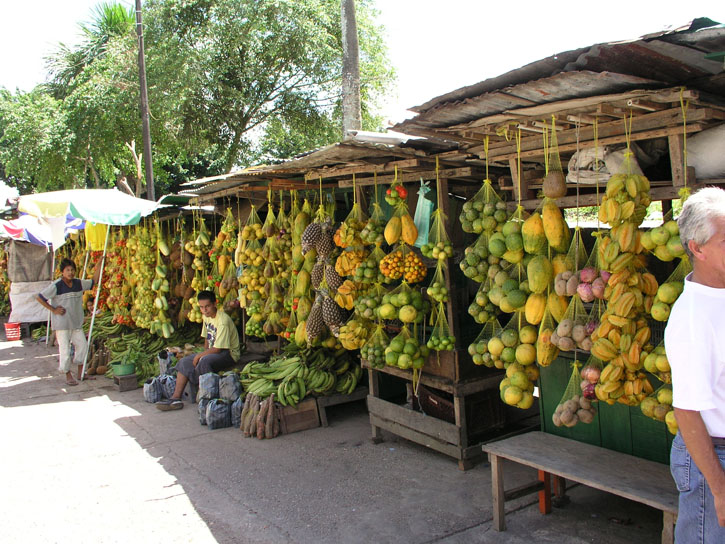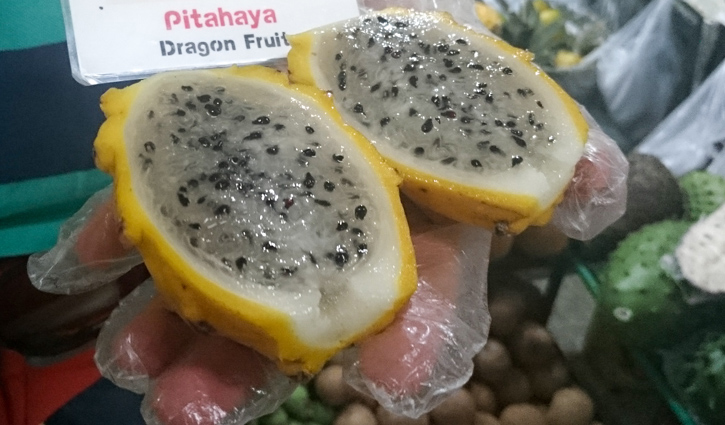All About Colombian Fruits
TIME : 2016/2/16 15:08:08
Colombia is a land bursting with exotic fruit. Sold from the back of pickup trucks by farmers on the roadside, overflowing at stalls in colorful markets in every town and village, lined up in neat rows in the produce section at fancy grocery stores and at juice stands—just about anywhere you go, delicious fruit is in reach.

A Colombian fruit market. Photo © Heather Thorkelson, licensed Creative Commons Attribution No-Derivatives.
You know pineapple, papaya, mangos, and bananas, but be sure to try these tropical delights that you may not have encountered outside of Colombia.
- Guanábana (soursop): By far the most weird-looking fruit, soursop resemble prehistoric dinosaur eggs. Inside the large green spiky fruit is a milky and slimy flesh. Guanábana is great in juices and desserts.
- Granadilla: Crack open this orangey-yellow fruit and slurp down the slimy gray contents, seeds and all. It’s delicious.
- Higo (prickly pear): This green fruit comes from cactus plants and has sweet, if tough, orange-colored meat.
- Pitahaya (dragon fruit): Looking like a yellow grenade, pitahayas have a sweet white meat inside.

A Medellín market vendor shows off a tasty pitahaya, or dragon fruit. Photo © CucombreLibre, licensed Creative Commons Attribution.
- Chirimoya (cherimoya): This green fruit that resembles a smooth artichoke is covered with a smooth, silky skin and filled with delectable, sweet pulp.
- Níspero (sapodilla): A fruit with a deep brown color that tastes like a prepared sweet.
- Mangostino (mangosteen): Crack open a deep purple mangosteen and enjoy the sweet segments inside. They’re full of antioxidants.
- Uchuva (Cape gooseberry): Known in English as Cape gooseberries, these tart yellow berries are a cousin of the tomato and are tasty on their own or in salads, but are often used in jams and sweets.
- Mamoncillo: Tough-skinned grapes (don’t eat the skin), mamoncillos are usually only sold at street markets.
Excerpted from the First Edition of Moon Colombia.

